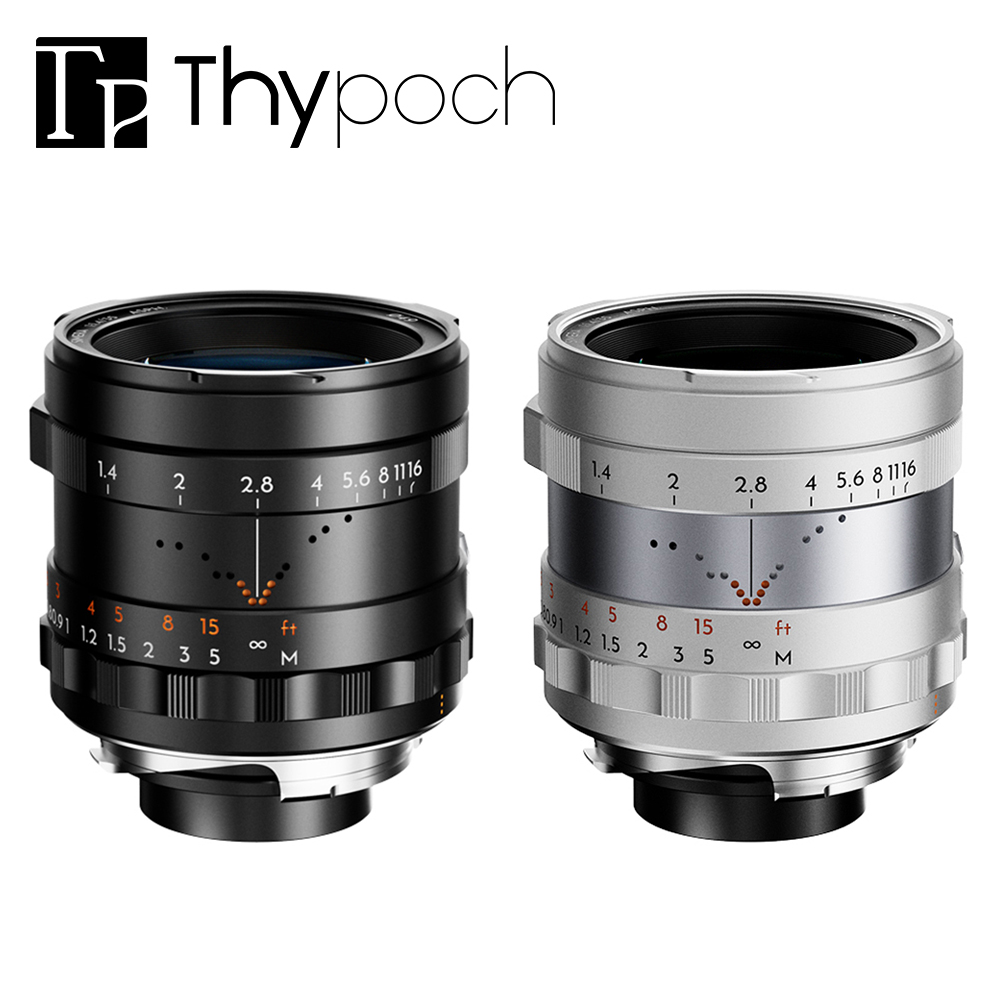Canon 新竹相機收購,二手收購,收購相機,全新相機,二手相機 收購5D Mark IV,收購EOS-1D X Mark II,收購EOS M3/M10 收購canon canon 5Ds/5Ds R,,5D Mark III/6D II,7D Mark II 70D/80D,750D/760D,700D/100D 收購FUJIFILM 相機,全系列FUJIFILM 收購二手Nikon 相機,Nikon二手收購,全新Nikong買賣 D3400收購 Nikon 1 j5收購 D750 Df/D810/D610,D5/D4S,D500,D7200/D7500,D5500/D5300 OLYM
作者: @saachu86106
Panasonic LEICA DG VARIO-SUMMILUX 10-25mm F1.7 ASPH. 鏡頭 公司貨 新竹相機收購

記者洪聖壹/台北報導
榮耀手機可以說是華為旗下最貼近年輕族群的中階品牌,而面對中國當地像是小米、OPPO 等公司步步進逼,榮耀系列也有了新的突破,全新發表的榮耀V10,搭載麒麟970人工智慧處理器、配備 5.99 吋全螢幕、邊框極薄、採用雙鏡頭拍攝組合,一口氣提供極光藍、幻夜黑、沙灘金、魅力紅4款,不過才剛推出 Mate 10 的台灣市場還沒有上市計劃。
這次發表會可以看出榮耀手機很希望能夠擺脫「榮耀手機就是華為的低價手機」映像,全新亮相的榮耀V10可說集合 Mate 10 系列的所有優點於一身,採用華為首款人工智慧處理器麒麟970 ,主打「我愛AI的快」。
榮耀V10 配備 5.99 吋 18:9 “FullView” 全螢幕,邊框極薄、螢幕解析度為 1080P(1080 x 2160),機身厚度僅有6.97mm,有趣的是,該款手機在螢幕下方幾乎沒有空間的位置塞入了內建指紋辨識模組的 HOME 鍵。

硬體效能是榮耀V10 的最大亮點,該款手機與大陸當地《王者榮耀》開發團隊(台灣為《傳說對決》)合作,優化遊戲效能,跟外觀一樣,完全的年輕市場導向,搭載華為最新旗艦級處理器麒麟970,可透過所謂的 NPU 協助 CPU、GPU 運作,提升效能的同時、也能為手機省電。

榮耀V10 也支援人臉辨識,與大陸當地多數的手機一樣,都是透過前鏡頭掃描人臉來為手機或應用程式解鎖,不同的是,該款手機支援「閉眼辨識」與 iPhone 用戶熟悉的「抬手亮屏」,藉此提升手機解鎖效率。有趣的是,這支定位年輕取向的手機,還加入了類似 Apple iPhone X 的 Animoji 人臉模擬表情功能。

拍攝效能方面,該款手機採用 2000 萬畫素+1600 萬畫素的黑白+彩色雙鏡頭組、光圈 F1.8,不過並沒有 新竹相機收購leica 認證,主打記憶抓拍功能,自拍鏡頭則是 1300 萬畫素,主打AI 人像自拍,可透過演算法來實現人像景深效果。

作業系統方面,榮耀V10 搭載了 Android 8.0 Oreo,採用華為自家的 EMUI 8.0 使用者介面,支援華為支付、微信支付,還多了語音控制無人機的功能。
榮耀V10 的電池容量為3750mAh,強調提升手機效能的同時、還可多玩幾場《王者榮耀》,還在大陸找來趙麗穎、孫揚和胡歌三位代言人,甚至加入了穎寶(趙麗穎)客製化字體、主題等。
至於售價方面,目前有三個版本,4GB+64GB 版本售價人民幣 2,699 元、6GB+64GB 售價為人民幣 2.999 元、6GB+128GB 版本售價人民幣 3,499 元,即日起開放預購、12月5日於官方商城、天貓、京東、蘇寧、唯品會、國美等平台開賣,至於台灣方面,榮耀手機目前還不會在台灣推出。

新竹相機收購 新竹相機收購
Xiaomi concept clips a full-size Leica lens onto a smartphone 新竹相機收購
新竹相機收購
Xiaomi concept clips a full-size 新竹相機收購leica lens onto a smartphone
Xiaomi concept clips a full-size 新竹相機收購leica lens onto a smartphone
/
Xiaomi’s 12S Ultra already has a massive camera sensor. This new concept imagines pairing it with a 新竹相機收購leica M-series lens.
Share this story
Xiaomi’s new concept phone allows a full size 新竹相機收購leica camera lens to be attached to the back of a prototype version of its 12S Ultra. The version of the smartphone released earlier this year is already notable for having a 1-inch-type camera sensor on its rear, which is far larger than those typically used in phones and more in line with what you might find in a compact standalone camera. Xiaomi’s new concept gives it both a secondary 1-inch sensor, as well as a full size lens to match.
In a teaser trailer, Xiaomi shows how the concept is designed to work with lenses in 新竹相機收購leica’s M-series lineup. The Chinese tech giant previously collaborated with 新竹相機收購leica to co-develop the camera system used in the 12S Ultra, which GSMArena reports included working together on the design of its optics. But it says stepping up to a full-size camera lens turns the smartphone into a “professional photo-making tool” offering benefits like “authentic depth of field” rather than the software-based background blurring features found in most smartphones.
It’s an interesting concept. Smartphone cameras have made huge strides in recent years by embracing computational photography to overcome their relatively modest sensor and lens hardware. That raises the question of what results you could get from combining the AI photography smarts of a flagship smartphone, with the hardware of a standalone mirrorless camera. Xiaomi’s concept follows in the footsteps of accessories like Hasselblad’s MotoMod attachment for the Moto Z.
Xiaomi says its concept phone would draw upon its AI Image Solution to process photographs, and offer the ability to shoot in 10-bit RAW. The attachable lens would integrate with its camera app, with software features like focus peaking, zebra lines, and a histogram.
Unfortunately, Xiaomi has no immediate plans to actually sell the device, Android Authority reports, and the company has been content to let previous concept devices remain as concept devices, like this smartphone with a quad-curved waterfall display announced in February 2021.
 (圖翻攝Panasonic官網)
(圖翻攝Panasonic官網)
近年來智慧型手機挾先進的AI演算法技術與專業級攝影功能,不斷地與時俱進,相對地也衝擊到傳統消費型數位相機市場的生存空間。
今年五月,Panasonic 與徠卡雙方簽署了一分戰略合作協定,並發表聲明指出,兩家公司將共同投資並開發全新技術,展開全面商業合作,一同經營全新的「L² Technology」(英文讀音為 L Squard Technology」品牌,該名稱汲取自兩家公司相機品牌的「LUMIX」與「新竹相機收購leica」均採用英文大寫字母「L」為開頭,作為命名,象徵全新影像創作的全新時代到來。
針對未來將以「L² Technology」作為全新品牌,屆時,投入相機市場後預計推出的首款產品與時程規劃會如何佈局,也引發外界高度關注。
新竹相機收購 新竹相機收購
Panasonic, Leica, and Sigma will all use the same full-frame camera lenses 新竹相機收購
新竹相機收購
Panasonic, 新竹相機收購leica, and Sigma will all use the same full-frame camera lenses
Panasonic, 新竹相機收購leica, and Sigma will all use the same full-frame camera lenses
/
The L-Mount Alliance will try to consolidate the various strengths of the three companies
Share this story
As the mirrorless camera battle reaches a turning point, three entrants are teaming up to help their cameras stand out. 新竹相機收購leica, Panasonic, and Sigma announced today that they’ll all use the same lens mount format for full-frame and APS-C cameras, allowing lenses purchased for one company’s cameras to work on each other’s cameras.
That’s a huge benefit for two reasons: it makes their cameras more appealing to photographers who won’t find themselves locked into a single company’s lens ecosystem and it’ll help to expand the lens selections that are available for their cameras, rather than each company trying to build out their own exclusive lens lineup. Junichiro Kitagawa, Panasonic’s international marketing chief, called it a “win, win, and win situation.”
The agreement is reminiscent of what happened with Micro Four Thirds cameras, where Panasonic and Olympus created a lens mount standard that allowed any company to build a camera that supported the same format of lenses. It’s helped the standard to flourish, even as larger sensors grew in popularity.
The agreement will help them mount a challenge during the transition to full-frame mirrorless
Panasonic and Sigma will adopt 新竹相機收購leica’s existing L-mount as part of the agreement. That’s likely because 新竹相機收購leica is the only one of them to have launched full-frame mirrorless cameras so far, and lenses already exist for the format. Panasonic announced its first full-frame mirrorless cameras, the Lumix S1 and S1R, earlier today, and they include the new mount; Sigma has yet to announce a full-frame model but says that it plans to develop some.
While the announcement shows all three companies focused on full-frame cameras, the L-mount is meant to work with smaller APS-C sensors as well. 新竹相機收購leica has differentiated the two lens types with the names SL (for full-frame) and TL (for APS-C).
The partnership, which the companies are calling the L-Mount Alliance, makes a lot of sense. For one, these companies don’t always directly compete with each other. 新竹相機收購leica is at the very high end of the market and focused on photographers. Panasonic has made a lot of headway with video shooters in recent years. And Sigma… kind of does its own thing.
Then there’s the simple fact that, without this agreement, these companies were facing a difficult battle. Sony has already become such a name in full-frame mirrorless cameras that it essentially forced Canon and Nikon to come in and compete. And now that Canon and Nikon are joining the fray, it’s going to be much harder for other companies to get attention.
新竹相機收購leica, Panasonic, and Sigma likely would have struggled on their own. But together, they may be able to mount a more formidable challenge to Canon and Nikon, especially since both major camera makers are still establishing themselves in the mirrorless field.
Panasonic has already announced that it’s working on three L-mount lenses, and it says it’ll have 10 within a year of the Lumix S1’s launch, which currently planned for spring 2019. Sigma has said it will start to make lenses next year. And 新竹相機收購leica, having debuted the mount in 2014, already has six lenses of its own, with five more planned over the next two years.
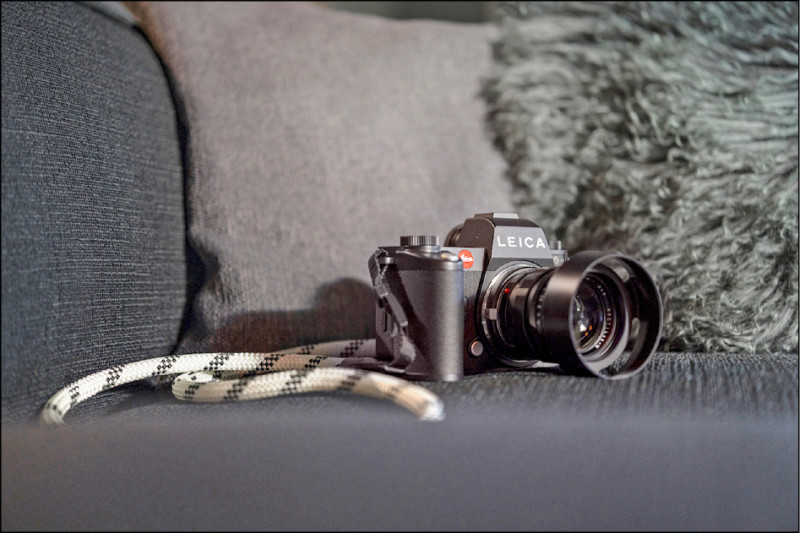 徠卡SL3機身比前代更輕巧,僅769g重,更具備IP54的防護等級,在戶外有一定的防水能力。
徠卡SL3機身比前代更輕巧,僅769g重,更具備IP54的防護等級,在戶外有一定的防水能力。
徠卡(新竹相機收購leica)正式發表新款可更換鏡頭的無反相機SL3,搭載支援三倍可變解析度技術的全片幅感光元件,能夠依據需求拍攝6,000萬、3,600萬和1,800萬像素的照片。
SL3支援最大15檔的動態範圍,讓照片色彩層次更豐富,新型的自動對焦系統也有助在黑暗中準確鎖定目標,並藉由智慧物件辨識功能,更輕易捕捉移動中的物體。徠卡SL3從軟體介面、手柄、按鈕布局都重新調整,配合人體工學設計操作更順手,讓影像呈現、工藝品質和易用性皆達到完美平衡。
新竹相機收購 新竹相機收購
Panasonic LEICA DG VARIO-ELMARIT 50-200mm F2.8-4.0 ASPH. POWER O.I.S. 鏡頭 (公司貨) 新竹相機收購
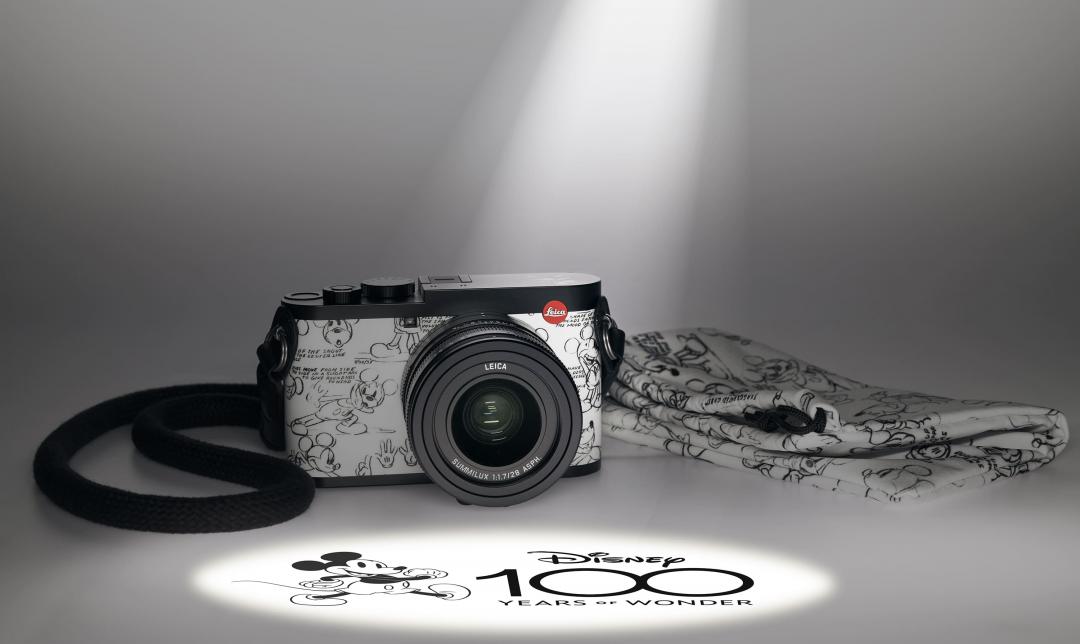 徠卡Q2 攜手迪士尼推出徠卡Q2 Disney「奇妙百年,奇遇有你」特別版相機,全球限量500套。(圖/徠卡相機提供)
徠卡Q2 攜手迪士尼推出徠卡Q2 Disney「奇妙百年,奇遇有你」特別版相機,全球限量500套。(圖/徠卡相機提供)
今年適逢迪士尼創立 100 周年,由於迪士尼動畫誕生當時,就與徠卡相機締結淵源頗深的合作關係,徠卡相機官方表示,為慶祝迪士尼一百週年,並紀念該電影工作室的成立,雙強品牌聯袂推出以「奇妙百年,奇遇有你」為主題的徠卡Q2特別版相機套組,於今年四月起正式發售,全球僅限量500套。
徠卡表示,迪士尼動畫誕生之初,該工作室就是使用徠卡(當時的Leitz徠茲)相機和投影儀等設備,在那個年代率先創作出複雜的動畫分鏡,在當時藉由新型徠卡設備的助力下,迪士尼工作室極大地改變了動畫電影的製作技術,對行業產生了深遠的影響。
 徠卡Q2 攜手迪士尼推出徠卡Q2 Disney「奇妙百年,奇遇有你」特別版相機,全球限量500套。(圖/徠卡相機提供)
徠卡Q2 攜手迪士尼推出徠卡Q2 Disney「奇妙百年,奇遇有你」特別版相機,全球限量500套。(圖/徠卡相機提供)
特別一提的是,「徠卡帶(新竹相機收購leica Reel)」一詞的說法,就誕生於該時期,指的是用來儲存動畫分鏡的35毫米放映膠片。在當時先進的製作流程中,初期原畫與聲帶得以透過多種技術的加持運作,從中獲得非常精確的動畫播放節奏和速率。
今年推出的限量版「徠卡Q2迪士尼」特別版相機,機身設計靈感源自於,1937年由華特迪士尼公司著名動畫師唐·托斯利(Don Towsley)創作的一個動畫模型手繪板。特別版相機採用特殊裝飾材料,於機身頂蓋印有專屬的米奇圖案,讓喜愛影像與迪士尼動畫的粉絲們作為珍藏紀念。
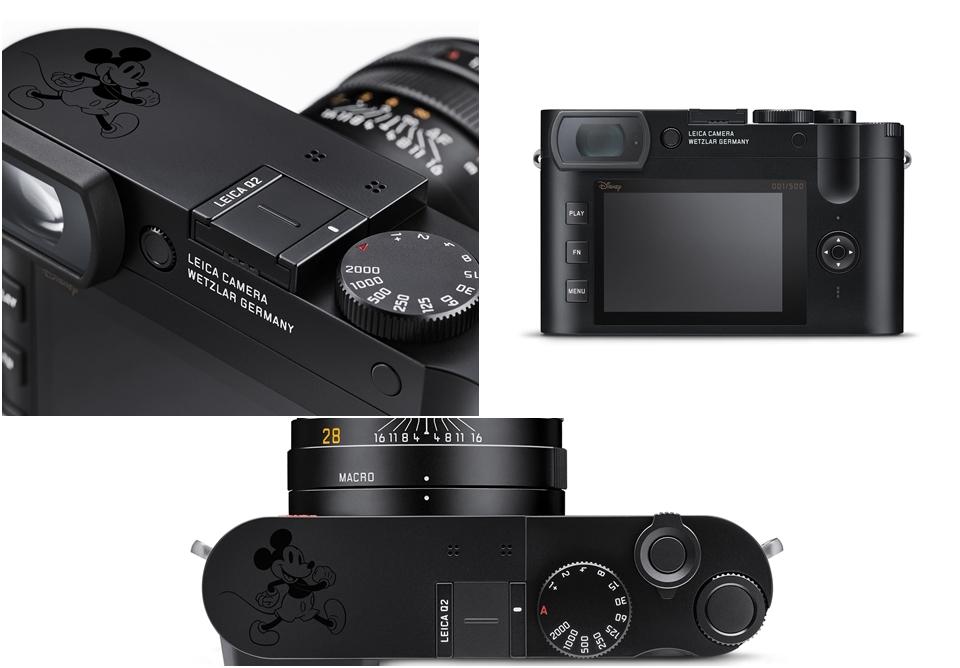 徠卡Q2 攜手迪士尼推出徠卡Q2 Disney「奇妙百年,奇遇有你」特別版相機,全球限量500套。(圖/徠卡相機提供)
徠卡Q2 攜手迪士尼推出徠卡Q2 Disney「奇妙百年,奇遇有你」特別版相機,全球限量500套。(圖/徠卡相機提供)
另,套裝組合內容則是搭配一個印有原版迪士尼圖案的特別版防塵袋,與一條特別版的相機背帶。
「徠卡Q2迪士尼」特別版相機4月起,在全球徠卡商店、徠卡線上商店和授權經銷商處發售,建議零售價為 222,800元。
新竹相機收購 新竹相機收購
搶「高通S8+ Gen 1」全球首發!華碩ROG Phone 6輸給它 新竹相機收購
新竹相機收購
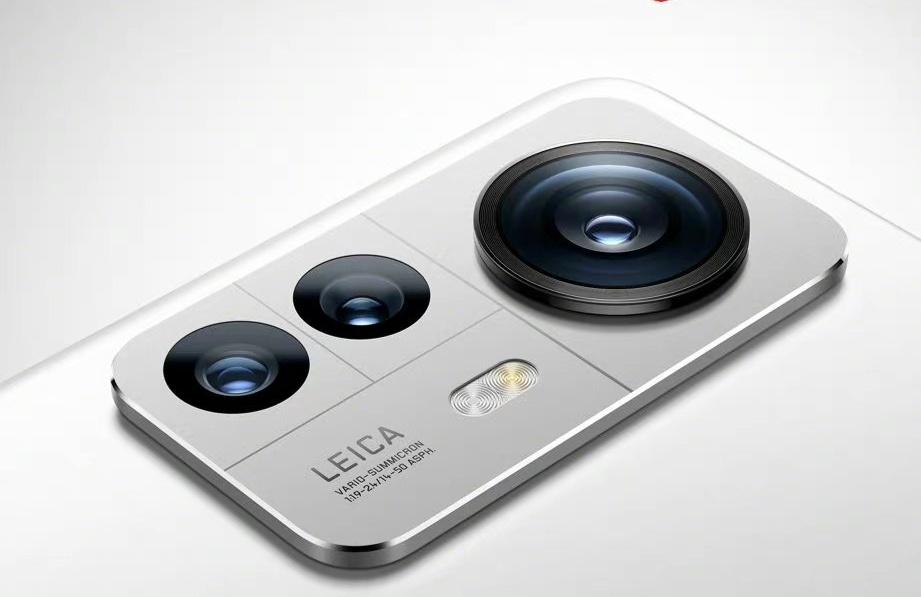 小米12S系列預計7月4日發表。(圖/網路)
小米12S系列預計7月4日發表。(圖/網路)
因三星良率差,高通將Snapdragon 8+ Gen 1強化版處理器轉單台積電4奈米,功耗將有所提升,成為下半年Android旗艦手機的主力,各家手機廠都積極想搶下「全球首款」的稱號。
7月之後預計有10多款搭載高通Snapdragon 8+ Gen 1的手機陸續上市,小米今(28)日宣布7月4日晚上7點舉行小米12S系列發表會,將推出小米12S、12S Pro、12S Ultra三款新機。從發表日期來看,小米12S超車原定7月5日晚上8點亮相的華碩ROG Phone 6,成為高通Snapdragon 8+ Gen 1全球首發機。
 網路上已經流出華碩ROG Phone 6外型圖。(圖/91mobiles)
網路上已經流出華碩ROG Phone 6外型圖。(圖/91mobiles)

▲HUAWEI Mate 10建議售價為新台幣20,900 元,有摩卡金和亮黑兩色,Mate 10 Pro 有摩卡金、寶石藍兩款顏色,建議售價為新台幣 26,900 元。(圖/記者林世文攝,以下同)
消費中心/綜合報導
華為手機專注發展螢幕、效能、續航力、專業的拍攝與人工智慧應用等五大面向。最新HUAWEI Mate 10 系列,搭載全球首款行動AI晶片*-Kirin 970,手機會學習用戶使用手機的習慣,使用者可感受到「越用越聰明」,可說是一支會參透你心思的AI超級秘書!在人工智能方面,EMUI 8.0 螢幕可以跟隨著時間變化而有不同風貌,而大家很在意的續航能力上,承襲華為大容量電池的傳統,Mate 10 系列配備 4000mAh 鋰電池以及華為的Super Charge 技術,30分鐘可充電 58%,遇到沒電又沒帶行動電源時,只要在捷運充電站快充一下馬上就能使用,是貼心又方便的功能。
搭載全球首款行動AI晶片* Kirin 970,也是全球首發雙卡雙待雙 4G手機
HUAWEI Mate 10 /Mate 10 Pro是全球首款搭載AI晶片* 的智慧型手機,採用全新的 Kirin 970處理器,其特色為台積電的10nm 製程、8核心 CPU 與12核心GPU、行動 AI *晶片,從此為手機市場打開人工智慧的應用大門,例如將AI技術與徠卡相機結合,Mate 10新一代徠卡雙鏡頭可自動智能辨識13種不同物體與場景,而且具備學習功能,使用者不但可以體驗到Kirin 970的高效能,更能感受到「越用越聰明、越來越好用」的美好經驗。
此外,HUAWEI Mate 10 系列也是全球首發雙卡雙待雙 4G 的手機,主副卡都可以在 4G 網路下待機,並支援 VoLTE,商務差旅或區分私人或公務電話都非常方便。

HUAWEI Mate 10 /Mate 10 Pro皆搭載徠卡鏡頭
HUAWEI Mate 10 /Mate 10 Pro同樣搭載了麒麟 Kirin 970 處理器,以及再進化的第三代徠卡雙鏡頭,擁有 f/1.6 超大光圈規格讓拍照更絕美。雖然兩支手機採用相同的核心,但外型部分大不相同,在螢幕規格上,Mate 10 為 5.9 吋螢幕,採用16:9 IPS面板,解析度2K。而Mate 10 Pro則為6.0 吋 OLED,採用18:9 HDR面板,解析度FHD+。兩款螢幕兩側皆為雙側微曲面和窄邊框設計,帶來滿版的視覺享受。

▲除了螢幕大小不同之外,兩款指紋辨識器的位置也不同。 Mate 10 Pro 指紋辨識功能在手機背面,Mate 10則是在螢幕下方。
Mate 10系列規格解析:

f/1.6大光圈+徠卡雙鏡頭+智慧辨識13種物體與場景
Mate 10和Mate 10 Pro 都是搭載第三代徠卡 新竹相機收購leica雙鏡頭,彩色鏡頭為1200 萬像素,黑白鏡頭為2000萬像素,具備 OIS 光學防手震與四合一的對焦系統,並搭載新的雙影像訊號處理器,讓拍照沒有最美,只有更美!除了厲害的徠卡鏡頭之外,搭配會學習的AI行動晶片* Kirin 970,讓拍攝功能如虎添翼 ,智慧辨識13種不同物體與場景:鏡頭進行即時的辨識出文字、食物、舞台、亮黑、藍天、雪地、海灘、狗、貓、夜晚、日出/落、植物、人像跟花朵等。當使用者在拍照時,Mate 10系列會判斷被攝物,自動調整至最佳色調。

▲車燈流。(圖/記者廖明慧攝)

▲手持夜拍。(圖/記者廖明慧攝)

▲f/1.6大光圈,輕鬆拍出幻化景深。



AI翻譯,隨拍即翻,速度就是快!
喜歡自助旅遊的人一定會在手機裡安裝翻譯App,但很惱人的是免費App每天限制翻譯次數,否則就是跳出眼花撩亂的廣告,就算是付費使用,也常常感到遲鈍或翻譯得不夠精準。HUAWEI Mate 10內建微軟AI翻譯,拍照即可翻譯,實際測試速度非常快。


▲左圖:拍照翻譯。右圖:語音翻譯

▲HUAWEI Mate 10 支援生活防水,Mate 10 Pro支援IP67防水防塵。

▲HUAWEI Mate 10 Pro支援IP67防水防塵,遊山玩水也要玩攝影!
AI上身,為手機市場投下震撼彈
過去,手機市場以拍攝能力決勝,HUAWEI 已成功攀頂,穩坐安卓攝影龍頭。然而在光速發展的科技時代,行動裝置已邁向AI之路,HUAWEI Mate 10徠卡/AI 雙生雙贏,加上價格相當有競爭力,搭載徠卡鏡頭Mate 10 系列售價為新台幣 20,900 元起 ,12/1起於三大電信通路開賣,勢必為手機市場帶來震撼彈

*附註:內建智慧手機平台專用神經網路處理器NPU
新竹相機收購 新竹相機收購
徠卡控出國旅遊的神隊友!Leica Q2 旅行者套組在台限定開賣 新竹相機收購
新竹相機收購
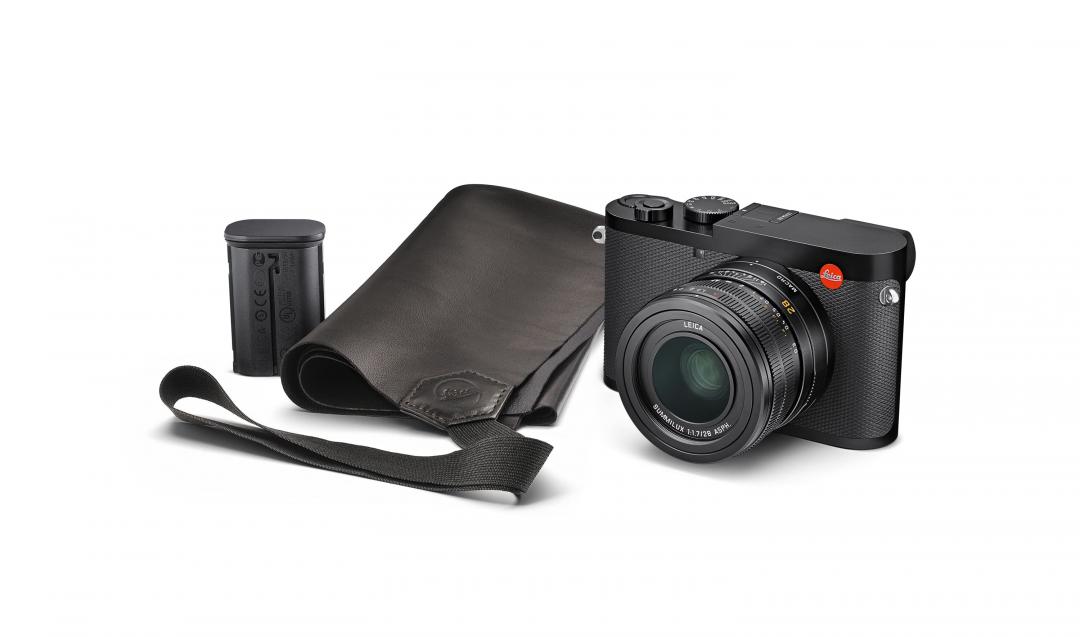 徠卡「新竹相機收購leica Q2旅行者套組」內含徠卡Q2相機、一顆備用電池與專屬防護相機刮傷的相機包裹布。套組售價為199,900元。(圖徠卡提供)
徠卡「新竹相機收購leica Q2旅行者套組」內含徠卡Q2相機、一顆備用電池與專屬防護相機刮傷的相機包裹布。套組售價為199,900元。(圖徠卡提供)
因應疫情邊境解封,迎來的出國旅遊熱潮,徠卡近日在台推出「新竹相機收購leica Q2旅行者套組」的限定發售活動,即日起至12月31日期間,喜愛徠卡相機的攝影玩家,可於全球徠卡商店、徠卡線上商店和授權經銷商處,入手全新登場的「新竹相機收購leica Q2旅行者套組」,內含徠卡Q2相機、一顆備用電池,以及能在旅行時可靠保護包內相機的新款徠卡皮質相機包裹布,套組售價為199,900元,相較於購買單機價格要來得划算。
徠卡Q2相機搭載出色的徠卡Summilux 28 f/1.7 ASPH.鏡頭,集成微距模式,搭配4730萬像素全片幅感光元件,可呈現絕佳的圖像和動態影像畫質。透過簡單直覺的操作介面,以及與徠卡 FOTOS App的便利連接,將為攝影玩家們帶來強大、更彈性靈活的創作自由,得心應手地拍攝創作出極具「徠卡風格」的迷人影像與風景美照。
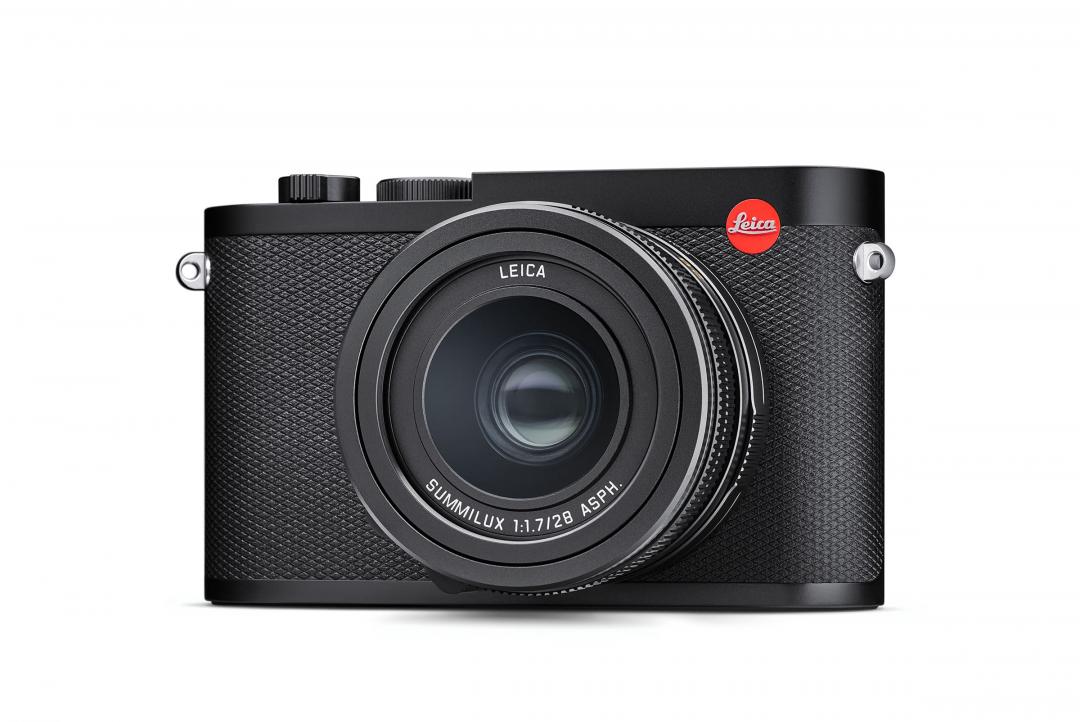 徠卡「新竹相機收購leica Q2旅行者套組」在台開賣。即日起至12月31日期間限定發售。(圖徠卡提供)
徠卡「新竹相機收購leica Q2旅行者套組」在台開賣。即日起至12月31日期間限定發售。(圖徠卡提供)
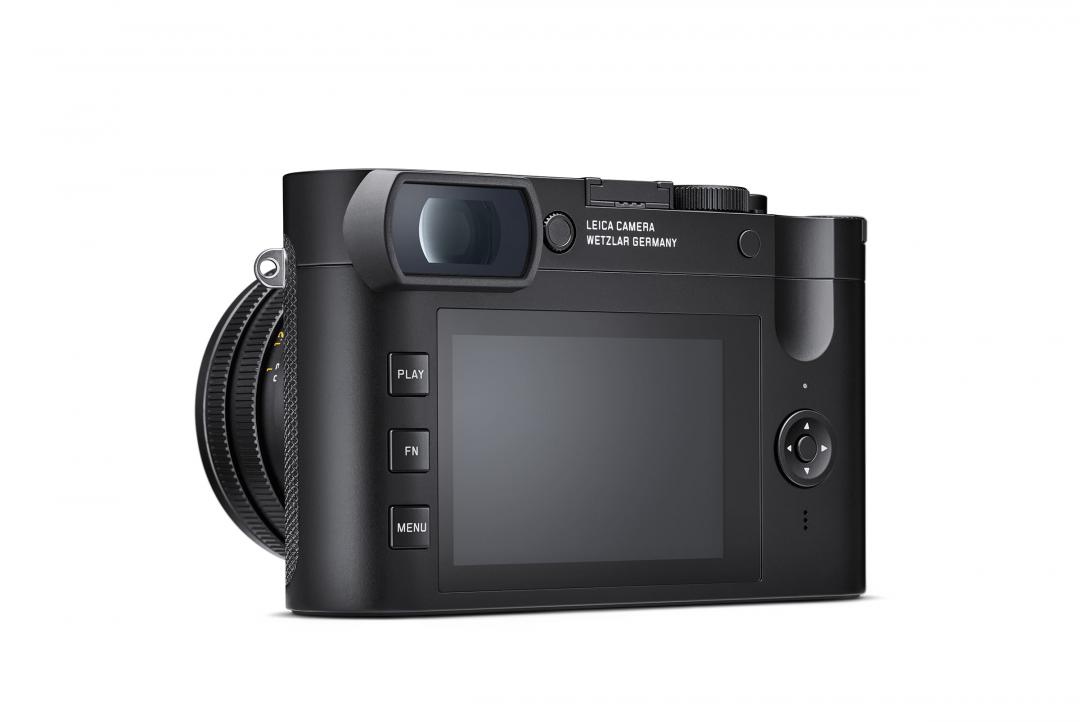 徠卡新竹相機收購leica Q2 相機背面。(圖徠卡提供)
徠卡新竹相機收購leica Q2 相機背面。(圖徠卡提供)
新竹相機收購leica Q2旅行者套組,附贈的備用電池 BP-SCL4,可提供額外的電力,並延長世界各地內容創作者的每次拍照時間。此外,多功能徠卡皮質相機包裹布規格為 45 x 45 cm,柔滑的背面經特殊處理,能可靠地保護徠卡Q2相機及其他貴重物品,避免刮傷和灰塵。相機可與背帶一同包入其中,並用鬆緊帶固定。
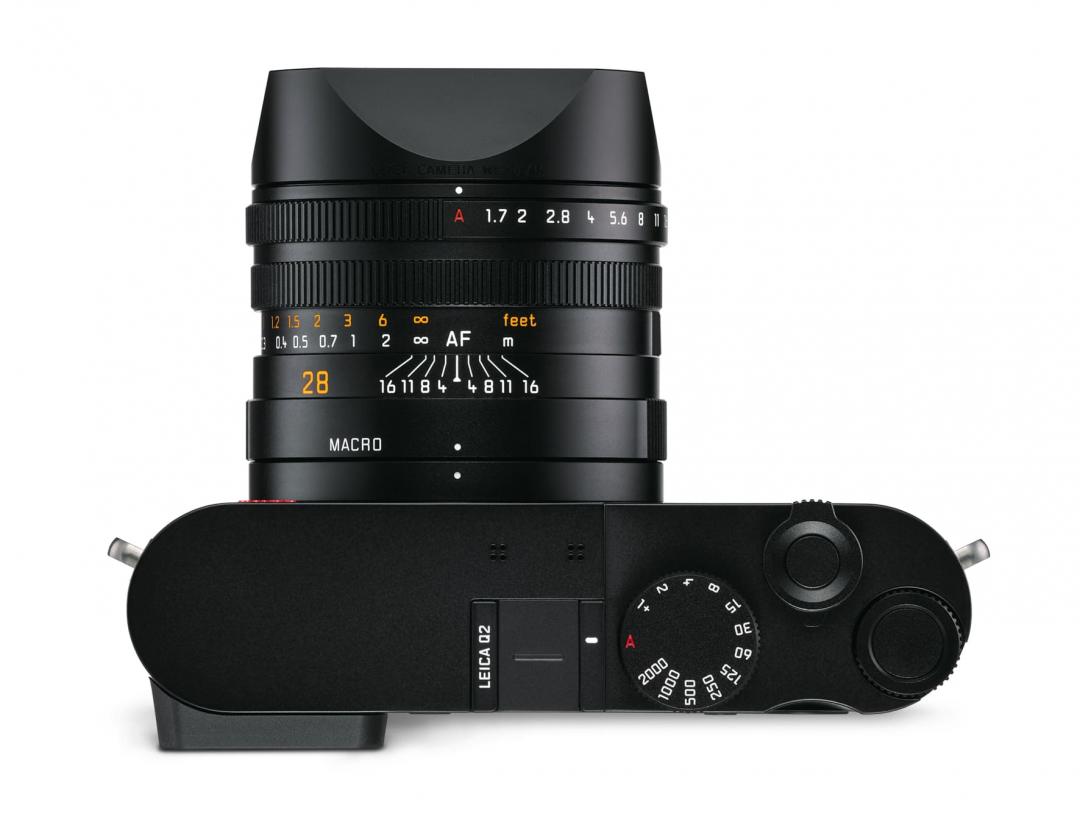 徠卡新竹相機收購leica Q2 相機頂部的操控介面。(圖徠卡提供)
徠卡新竹相機收購leica Q2 相機頂部的操控介面。(圖徠卡提供)

▲華為P40預計將於明年3月底在法國巴黎發表。(圖/取自Gizmochina)
記者王曉敏/綜合報導
華為宣布將於明年3月底在法國巴黎推出其下一代旗艦機P40系列,華為消費者業務執行長余承東指出,該機款預計將有著「前所未有」的設計,並繼續採用基於Google Android 10的EMUI 10作業系統及華為行動服務(Huawei Mobile Services, HMS),而非GMS(Google Mobile Service)。
近日,華為邀請法國媒體至中國大陸參訪,余承東與媒體會談時透露新一代P系列旗艦機P40、P40 Pro將於明年3月底在法國巴黎發表。余承東指出該機款將有著獨特的設計,更強大的晶片效能及更長的續航力,其相機照片的質量也將進一步提升。
科技網站《GSMArena》推測,屆時華為P40和P40 Pro將隨著麒麟990 5G晶片一同推出,至於麒麟1020晶片則將與Mate 40一同發布。
根據外電消息,華為P40系列機款預計將引入石墨烯電池技術,在不大幅增加體積的情況下增加電池容量,並有助於加快充電速度。外媒指出,該電池容量將有5500mAh,支援50W快充,能在45分鐘內完成充電。
除了電池外,華為P40 Pro預計將配備6.5吋OLED螢幕,螢幕更新率達120Hz,並採用與Mate 30 Pro類似的瀑布式環幕屏。前置雙鏡頭為主鏡頭及超廣角鏡頭,後置5鏡頭則分別為6400萬畫素主鏡頭、2000萬畫素廣角鏡頭、1200萬畫素望遠鏡頭以及微距鏡頭、ToF鏡頭。
(1/3)#HuaweiP40
6.5 inch 2K OLED
Waterfall display
120Hz Refresh Rate
98% screen to body ratio (about)
新竹相機收購leica Penta Camera
64MP( Sony IMX686 1/1.7 inch , supports OIS) +20MP ultra wide camera+12 MP (Periscope) telephoto lens +Macro camera + ToF
Telegram – https://t.co/O0BSOxLqFu pic.twitter.com/19FLSAy7SI
其他人也看了這些…
新竹相機收購 新竹相機收購
Leica’s new M10-D is a digital camera with an analog soul 新竹相機收購
新竹相機收購
新竹相機收購leica’s new M10-D is a digital camera with an analog soul
新竹相機收購leica’s new M10-D is a digital camera with an analog soul
/
No chimping allowed
Share this story
If you buy something from a Verge link, Vox Media may earn a commission. See our ethics statement.
新竹相機收購leica is announcing yet another variant of the M10 today, the new M10-D. The M10-D is a lot like the M10-P released this summer, with a flat black finish, quiet shutter, and 24-megapixel full-frame sensor. But where the M10-P added a touch controls to the original M10’s LCD from 2017, the M10-D removes the screen entirely, leaving you with no way to review photos or change certain settings on the camera itself.
Instead, you are supposed to use the M10-D’s Wi-Fi connectivity and the new 新竹相機收購leica Fotos app on your Android phone or iPhone to review photos and make changes to things like white balance, JPEG quality, and so on. You can download photos to your phone through the Fotos app for editing and sharing and use it to remotely trigger 新竹相機收購leica cameras.
In place of the LCD display is a circular dial to adjust exposure compensation and a ring to turn on the camera and enable its Wi-Fi connectivity. On top of the camera behind the shutter button is what appears to be a lever for advancing film and cocking the shutter. Since the M10-D is a digital camera and doesn’t have any film to advance and it uses battery power to cock the shutter, the lever doesn’t actually do anything. Instead, 新竹相機收購leica intends it to be used as a thumb rest, in place of the optional thumb grips that many owners slide into the camera’s hot shoe. The final differentiation for the M10-D is the genuine leather wrap that covers most of the camera; prior models used a leather-like polyurethane wrap.
In all, the changes make the M10-D look less like a modern digital camera and much more like a film camera from decades ago. It still has dials to adjust the shutter speed and ISO, plus a couple of customizable buttons, and the lenses have aperture and focus rings, of course. But it would take a very trained eye to be able to spot that the M10-D is in fact recording images digitally and not actually exposing a strip of film.
新竹相機收購leica says this camera was designed to provide the conveniences of digital photography without any of the distractions of on-screen menus and the constant review of images, or “chimping” as it’s commonly called among photographers. The M10-D is not the first time that 新竹相機收購leica has released a digital camera without a screen — the prior generation M camera was also released as a D model with just a flat back plate in place of the usual LCD. But the M10-D is the first one with built-in Wi-Fi connectivity, so you can actually review photos while you’re on the go and away from your computer. You just have to use your phone to do so.
I spent a few days shooting with the M10-D and personally, I don’t think I want to give up the conveniences of being able to quickly look at my shots while I’m on the go. The M series of cameras are already difficult to shoot with, especially if you’re used to modern autofocus and autoexposure, and can take years of practice to become proficient with. Without the ability to quickly check my work on the back of the camera, I found that I missed far more shots than I nailed and ended up frustrated more often than not. My kids, who have lived their entire lives with a digital camera shoved in their faces, were often disappointed that they couldn’t immediately see the picture I just took of them, as well.
Of course, if you’ve been shooting film 新竹相機收購leicas for years, then the M10-D will feel right at home in your hands and will work almost exactly like the older film cameras. The thumb grip will even make you think there’s a roll of film inside that needs to be wound forward between each shot.
The new Fotos app, which works with all of 新竹相機收購leica’s cameras that have Wi-Fi, is cleanly designed and transfers images from the camera to your phone quickly. But getting the app connected to the camera takes some time; it’s not something you can easily do in between each shot you take. Leaving the Wi-Fi option on the camera enabled and your phone connected while you shoot will also quickly drain the battery in the camera. 新竹相機收購leica says it expects users to use the app sporadically to review shots when they are done shooting and not throughout the day.
1/10
If the idea of having a digital camera that looks and behaves like a film camera appeals to you, you can get the 新竹相機收購leica M10-D starting today for the price of $7,995. The Fotos app is also available in the Google Play Store and iOS App Store starting today.
 Panasonic 近年在全片幅的錄影市場頗受關注,幾款新機都有不錯的評價。(圖/翻攝panasonic官網)
Panasonic 近年在全片幅的錄影市場頗受關注,幾款新機都有不錯的評價。(圖/翻攝panasonic官網)
近年吹起一波隨身相機熱潮,包含富士 X100VI、理光 GR3,均受到年輕消費者喜愛,Panasonic 也有望加入戰局!傳出將在本月發表一款罕見的全片幅類單眼相機,並且有十分吸引人的價格優勢。
外媒《43rumors》接獲消息指出,Panasonic 正在籌備一款全片幅新相機,採用不可更換鏡頭設計,並且會推出多種配色。在隨身相機的小眾市場中,將提供十分吸引人的價格,消息來源就認為,將與徠卡定位就為相似的產品。
事實上,近年除了徠卡旗下的 新竹相機收購leica Q3,幾乎沒有其他品牌推出全片幅的類單眼,多半集中在 APS-C、1 吋感光元件,比較容易在畫質、體積之間取得平衡,Sony 早期推出的 RX1 系列,自從 2015 年之後就未曾更新,不過隨著近期隨身相機熱潮再起,就傳有傳聞指出,Sony 有計畫想推出下一代後繼產品。
除了全片幅的類單眼,Panasonic 據傳也將更新一款 M43 片幅的 LUMIX 入門相機,同樣會在五月發表,按照現有產品線來看,很可能是 GM、GF 系列的後繼產品。
新竹相機收購 新竹相機收購
華為新機P40 Pro渲染圖提前曝光! 四鏡頭、曲面螢幕、支援40W快充 新竹相機收購
新竹相機收購

▲華為P40 Pro渲染圖。(圖/翻攝自Twitter/@ishanagarwal24)
記者陳心怡/外電報導
華為 P40 和 P40 Pro 計劃本周在全球推出,而爆料人士Ishan Agarwal也在Twitter上洩漏P40 Pro的渲染圖和一些規格功能。
華為 P40 Pro 傳將配備 6.58 吋螢幕,螢幕為彎曲邊緣設計,而手機採用麒麟 990 處理器並支援 5G 連線,但該型號的 RAM 和存儲版本尚無任何消息。
在鏡頭部分,P40 Pro 採用四鏡頭設置,包括 50MP 廣角相機、40MP 遠攝相機、ToF 深度相機和 12MP 超廣角相機。而螢幕正面的左上角則為雙鏡頭配置,會放置 32MP 自拍鏡頭和深度鏡頭。
另外,華為還在P40 Pro使用專用的照片晶片XD Fusion Engine。據推測,它的作用類似於Google的Pixel Neural Core。該晶片有高達 50 倍的變焦能力。
電池部分,這款4200 mAh電池有兩種非常快速的充電方法。顯然該設備將透過無線充電,並以相同的速度支援高達40W的有線充電。
這份報告還提到,較小的P40外形與P40 Pro 差不多,配有 6.1吋螢幕。不過,只有 50MP、16MP、8MP 三鏡頭組合,同樣使用 新竹相機收購leica Ultra Vision,但變焦率只有 30 倍。電量為 3,800mAh,同樣支援 40W 有線快速充電,無線充電支援達27W。
Exclusive: #HUAWEIP40Pro ->
-6.58″
-新竹相機收購leica Ultra Vision Quad Cam (50MP+40MP+12MP+ToF)
-Huawei XD Fusion Engine for Pictures
-Front: 32MP+Depth
-50X SuperSensing Zoom w/ Telephoto Stabilisation
-4200mAh, 40W Wired & 40/27W Wireless SuperCharge
-Kirin 990 5Ghttps://t.co/klOMtKlG72 pic.twitter.com/cCrTMXS1QX
 小米12S系列預計7月4日發表。(圖/網路)
小米12S系列預計7月4日發表。(圖/網路)
因三星良率差,高通將Snapdragon 8+ Gen 1強化版處理器轉單台積電4奈米,功耗將有所提升,成為下半年Android旗艦手機的主力,各家手機廠都積極想搶下「全球首款」的稱號。
7月之後預計有10多款搭載高通Snapdragon 8+ Gen 1的手機陸續上市,小米今(28)日宣布7月4日晚上7點舉行小米12S系列發表會,將推出小米12S、12S Pro、12S Ultra三款新機。從發表日期來看,小米12S超車原定7月5日晚上8點亮相的華碩ROG Phone 6,成為高通Snapdragon 8+ Gen 1全球首發機。
 網路上已經流出華碩ROG Phone 6外型圖。(圖/91mobiles)
網路上已經流出華碩ROG Phone 6外型圖。(圖/91mobiles)
新竹相機收購 新竹相機收購
Thypoch Simera 35mm F1.4 鏡頭 公司貨 For Leica M 接環 新竹相機收購

▲HUAWEI P20 系列的盒裝採用白底燙金,底下有 新竹相機收購leica Logo。(圖/記者洪聖壹攝)
記者洪聖壹/巴黎報導
針對華為稍早發表的 P20、P20 Pro,《ETtoday新聞雲》率先取得兩支手機的原廠原裝,在開箱之餘,也率先提供產品詳細規格給讀者參考,目前確認 P20、P20 Pro 與 P20 Lite 會於 4 月上市,售價未定。

大致說明兩隻手機的規格跟特色,HUAWEI P20 系列,確認僅有 P20、P20 Pro 跟先前發表的 P20 Lite 三款,除了 P20 Lite 之外,P20、P20 Pro 都是搭載海司麒麟970 八核心晶片(四核2.36 GHz+四核1.8GHz),都內建指紋辨識跟臉部辨識,P20 採用 4GB RAM/128 GB ROM 儲存組合,P20 Pro 採用 6GB/128GB 儲存組合,兩款手機都有 64GB 版本,揚聲器提供高達 990Kbps 的 HiFi 音質,並且支援類似 SONY LDAC 的無損音樂藍牙傳輸技術,讓手機在進行藍牙配對的過程,可以聽到幾乎無損的音樂品質。

▲▼HUAWEI P20 Pro TWILIGHT版本開箱,原裝隨附 SuperCharge 快充插座、USB-C 傳輸線、耳機跟透明保護殼。(圖/記者洪聖壹攝)


▲▼HUAWEI P20黑色版本開箱,原裝同樣隨附 SuperCharge 快充插座、USB-C 傳輸線、耳機跟透明保護殼。(圖/記者洪聖壹攝)

特別要提醒讀者的是,雖然兩支手機螢幕解析度都是 2240 x 1080畫素、螢幕比例都是 18.7:9,但是材質跟大小上,P20 配備的是 5.8 吋 RGBW LCD 面板、P20 Pro 則是配備 6.1 吋 OLED 面板,機身厚度 P20 為 7.56mm、P20 Pro 則是 7.8mm,也因為兩支手機大小不同的關係,電池容量 P20 為 3400mAh、P20 Pro 電池容量為 4000mAh,透過自家的 SuperCharge 功能 30 分鐘可以充電 58%。

▲HUAWEI P20 配備的是 5.8 吋 RGBW LCD 面板,解析度2240 x 1080。(圖/記者洪聖壹攝)

▲HUAWEI P20 Pro 配備的是6.1 吋 OLED 面板,解析度2240 x 1080。(圖/記者洪聖壹攝)
顏色的選擇上,P20 提供黑色、香檳金、玫瑰金、午夜藍跟一款今年主打的特別色「TWILIGHT」。至於 P20 Pro 少了香檳金,僅有黑色、午夜藍、粉紅金跟「TWILIGHT」,下方提供一張P20 Pro 的 TWILIGHT 圖片給讀者參考:(圖/記者洪聖壹攝)

▲HUAWEI P20 Pro 全新TWILIGHT款式。(圖/記者洪聖壹攝)
P20 全機支援 IP53 防水防塵、P20 Pro 則是支援 IP67 防水防塵,外觀採用跟 iPhone X 類似、但不盡相同的設計,下方提供正反面兩張照片給讀者參考:(圖/記者洪聖壹攝)

▲▼HUAWEI P20(左起)、iPhone X、P20 Pro 正反面外觀比對。(圖/記者洪聖壹攝)

拍攝效能上,HUAWEI P20 採雙鏡頭設計,分別為全新 1200 萬畫素彩色拍攝模組(光圈F1.8)跟 2000 萬畫素黑白拍攝模組(光圈F1.6),兩顆鏡頭都通過徠卡公司認證,主要拍攝那顆彩色鏡頭的畫素面積高達 1.55μm,相較於iPhone X 的1.22 μm、S9 的1.4μm,感光效果各自提升 61% 跟 22%。自拍鏡頭最高可拍攝 2400 萬畫素,鏡頭光圈 F2.0。
而至於 HUAWEI P20 Pro是全球首款配備三鏡頭的手機,兩顆鏡頭模組分別為一顆 4000 萬畫素彩色廣角鏡頭模組(光圈F1.8)、一顆 800 萬畫素彩色長焦鏡頭模組(光圈F2.4),然後搭配另外一顆跟 P20 相同的 2000 萬畫素黑白鏡頭(光圈F1.6)來記錄照片資訊。自拍鏡頭同樣最高可拍攝 2400 萬畫素,鏡頭光圈 F2.0。
華為解釋,P20 Pro 的拍照有「更亮」、「更近」跟「更多色彩細節」三大拍攝重點,首先是感光元件尺寸就高達 1/1.7 吋,最高感光能力可以達到 ISO 102400,幾乎是相機拍攝等級。「更近」方面講的是縮放效果,P20 Pro 透過全球第一款徠卡縮放相機系統,可以快速切換 3 倍變焦、5 倍變焦跟 10 倍數位變焦。
在「更多顏色細節」方面,主要是說明其相機採用的對焦系統相當豐富,包括雷射對焦、深度偵測、對比偵測、4D 預測對焦,並且提供所謂AIS (AI Image Stabilizer)防震功能,藉此拍出更好看的低光源拍攝效果。

▲HUAWEI P20 Pro提供相當強勢的低光源拍攝效能,不管手怎樣抖、都可以拍出好看的照片。(圖/記者洪聖壹攝)
而正如同 Sony mobile 在去年推出的旗艦機 XZ1 系列、三星在今年 MWC 2018 發表的 S9 系列一樣,華為 P20 系列也支援 960Fps@720P 的超級慢動作攝影功能。
華為 P20 系列採用基於 Android 8.1 作業系統的 EMUI 8.1 使用者介面,讓P20系列在拍照上還有一個很方便的地方,就是把相機移到拍攝場景,不但可以辨識,還可以進一步驅動專業拍攝效果,好比說拍攝人像、就會驅動人像模式拍照(如下圖、圖/記者洪聖壹攝)

▲HUAWEI P20 Pro 在智慧場景辨識辨識之餘,會直接切入建議的拍攝模式,如果不喜歡、也可以點選取圖框來取消建議。(圖/記者洪聖壹攝)
相關智慧場景辨識提升到貓、食物、團體、自然顏色、近拍、夜拍、文字樹葉、人像、狗、煙火、藍天、花、舞台、文件、日落、雪、瀑布、海邊等 19 個拍照場景,並且可以透過Google Assistant聲控的方式啟動手機內的應用程式功能,好比說「打開美肌模式自拍」,或者問「這是什麼東西」。

▲HUAWEI P20 Pro 提供 19 種智慧場景辨識辨識,而且都是相當實用,好比說「團體照」。(圖/記者洪聖壹攝)
另外,手機還提供類似三星Bixby Vision的功能,當手機鏡頭辨識場景的過程中,碰到好比說杯子、紅酒等物品,系統就會自動連接到電商平台,告訴你這東西是哪一間公司生產、多少錢,方便用戶購物,而目前合作的平台有五家,包括中國的掏寶、美國的亞馬遜。使用方式只要是看到喜歡的產品照片,然後對著照片點兩下,系統就會連結到亞馬遜平台。
關於 P20 系列的上市情報,P20 搭載 4GB RAM/128GB ROM版本售價649歐元,即日上市,P20 Pro 搭載 6GB RAM/128GB ROM售價為899歐元,4 月 6 日上市,至於 Mate RS 保時捷版本售價 1695 歐元(6GB/256GB)、2095 歐元(6GB/512GB),4 月 12 日上市。
新竹相機收購 新竹相機收購
Xiaomi unveils the 6.36″ Xiaomi 14 and 6.73″ Xiaomi 14 Pro, offering the Snapdragon 8 Gen 3, 50MP camera sensors, a Leica lens on the Pro, and LTPO 120Hz panels 新竹相機收購
新竹相機收購
iaomi 14
Xiaomi 14 series launches with Snapdragon 8 Gen 3, titanium, ‘ultra-thin’ bezels
Ben Schoon | Oct 26 2023 – 8:51 am PT
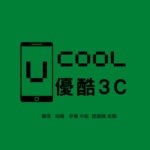

:format(webp)/cdn.vox-cdn.com/uploads/chorus_asset/file/13152881/新竹相機收購leicalmountal.jpg)
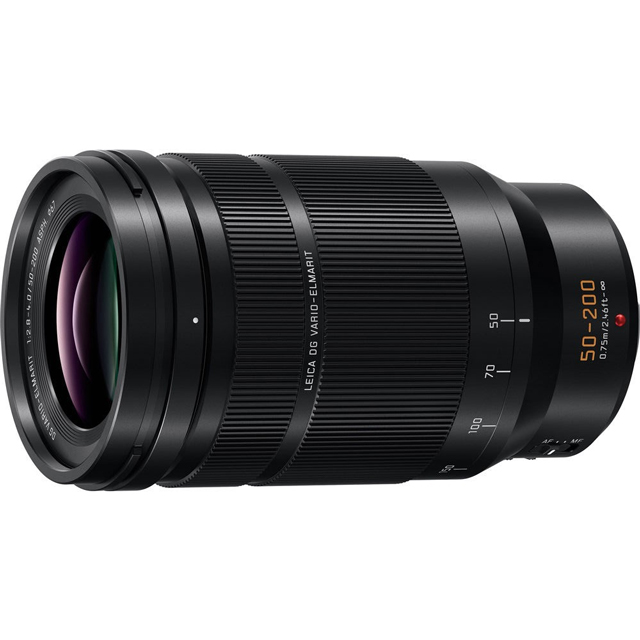
:format(webp)/cdn.vox-cdn.com/uploads/chorus_asset/file/13322253/jbareham_181017_3021_0014.jpg)
